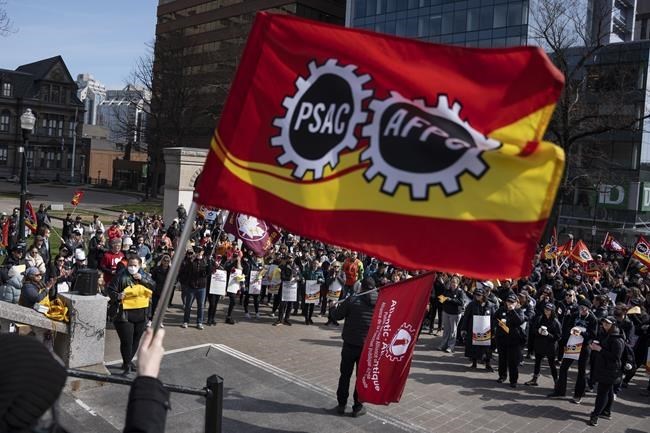The agreement on remote and flexible work between public sector workers and the federal government could set the stage for future union negotiations, according to labour experts.
“We're basically entering a brand new phase of what we talk about in collective agreements, which includes workers’ autonomy over their time,” said Armine Yalnizyan, an economist and the Atkinson Fellow on the Future of Workers.
The Public Service Alliance of Canada and Ottawa announced they had reached tentative agreements Monday morning for more than 120,000 workers, with wage gains and a letter of understanding about remote and hybrid work.
The letter outside the collective agreement promises a joint review of the government’s directive on telework, and the union said the letter will mean managers have to assess telework requests individually instead of the government applying a one-size-fits-all approach.
Yalnizyan said a case-by-case approach is appropriate for the post-pandemic era of work, even though it’s much more complicated than a one-size-fits-all policy.
Issues of employee time, surveillance, productivity and the right to disconnect have all become hot-button topics in the wake of COVID, but haven’t really been baked into formalized language, said Yalnizyan, putting PSAC and the government at the forefront of what’s bound to be an ongoing discussion.
While a letter of understanding is just the beginning, if a case-by-case approach to remote work gets baked into a collective agreement it could open the door to “a mountain of grievances,” she added.
“This is a large bargaining unit, and the interpretation of whether the boss was too strict or the worker was too lazy is in the eye of the beholder. So that's the problem with this approach,” Yalnizyan said.
“But it is also the best approach for the moment.”
Remote work is an issue everywhere, said Jim Stanford, an economist and director at the Centre for Future Work.
“Everywhere there's offices, workers and employers are having some tough discussions about how they come back to the office and what rights they have to continue working from home, at least part of the time,” he said on Monday.
Employers at unionized and non-unionized workplaces should expect to continue hearing about remote and flexible work in the months and years to come, said Lluc Cerda, a senior associate at employment law firm Samfiru Tumarkin LLP.
“The workplace has changed since the pandemic ... and a lot of employees are very reticent to give up some of the gains that they’ve acquired over that period," he said.
Stanford said both the public and private sector are grappling with this, and PSAC decided it preferred to negotiate the best way forward instead of having changes unilaterally imposed by the government.
“This is ... an important step toward making hybrid work a normalized part of the work environment and setting up reasonable balanced procedures to make all of those decisions,” he said.
“All this contract does is commit both sides to discussing and negotiating return to work as it occurs.”
Cerda said non-unionized workers should make sure they get any promises of remote or hybrid work into their contracts to ensure the arrangements are enforceable.
The same goes for getting remote work into a collective agreement, with a letter of understanding being a first step, said Cerda.
“The union hasn't given up on getting this written into the collective bargaining agreements,” he said.
Though remote work has been talked about a lot in the past couple of years, Yalnizyan pointed out it’s not something available to many workers, even those in white-collar jobs.
That’s likely why the government and the union were happy to start with a letter of understanding so they could get the wage demands, which affect all workers and have been top of mind for government workers without a contract during historic inflation, Yalnizyan said.
“I just think that was just such an adult way of dealing with a very difficult and very real problem that we are all making a big deal of, but doesn't affect that many people,” she said.
“Let’s get money to these workers first, and then we can talk about this other thing.”
According to Statistics Canada, hybrid work has become more popular in the wake of the pandemic, with almost one in 10 workers in October 2022 reporting they work both at home and outside of their home, up from earlier in 2022. That month, almost 16 per cent of workers said they work exclusively from home, down from the beginning of the year.
In a tight labour market where the workforce is shrinking as more Canadians retire, employers will use remote or hybrid work to attract and retain people, said Yalnizyan.
“We need all hands on deck, and that changes the dynamic,” she said.
Meanwhile, for unionized workers, PSAC’s agreement with the government could be influential, she said.
“It becomes a foundation for pattern bargaining in some respects,” she said.
“Talking is different than codifying. But it’s certainly a fascinating moment.”
— With files from Tara Deschamps
This report by The Canadian Press was first published May 2, 2023.
Rosa Saba, The Canadian Press




